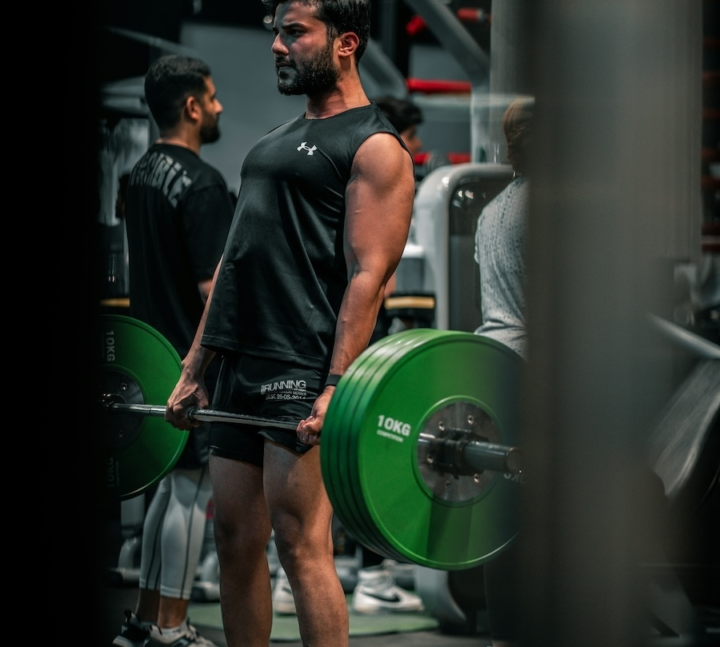Exercise
Hyperextension
How to Perform - Hyperextension
- Position yourself on the hyperextension bench with your upper thighs resting firmly on the support pads and feet secured under the ankle pads.
- Cross your arms over your chest or place your hands behind your head, keeping your back neutral and core engaged.
- Bend at the hips to lower your upper body toward the floor in a controlled motion until you feel a stretch in your hamstrings.
- Maintain a slight bend in your knees and avoid rounding your back as you descend.
- Exhale as you contract your glutes and hamstrings to raise your torso back to the starting position, stopping when your body forms a straight line.
- Pause briefly at the top position, ensuring you don't hyperextend your spine beyond the neutral position.
- Inhale as you begin to lower your torso again, controlling the descent with your hamstrings.
- Keep your movements slow and controlled throughout the exercise, focusing on the mind-muscle connection rather than momentum.
Important information
- Keep your spine in a neutral position throughout the movement—avoid excessive arching or rounding of your back.
- Adjust the foot pad height so your hip joint aligns with the top edge of the pad for optimal movement mechanics.
- If you experience lower back discomfort, reduce your range of motion or try placing your hands on your lower back for support.
- Focus on using your glutes and hamstrings to power the movement, not your lower back muscles.
Primary Muscles
Muscle Groups
Mechanic
Risk Areas
Built for progress
Take the guesswork out of training
Create personalized AI-powered workout plans that evolve with you. Train smarter, track every rep and keep moving forward, one workout at a time.






The hyperextension is a cornerstone exercise for developing posterior chain strength and stability, targeting the erector spinae, glutes, and hamstrings simultaneously. This intermediate movement serves as an excellent addition to bodybuilding routines, recovery protocols, and warm-up sequences, particularly for those focused on building functional strength.
Unlike many isolation exercises, the hyperextension creates a natural synergy between the lower back muscles and the entire posterior chain, promoting balanced development that translates to improved posture and reduced risk of lower back pain. The controlled nature of this movement allows for effective muscle recruitment without excessive loading on the spine, making it appropriate for lifters who need to strengthen their back while working around certain limitations.
For bodybuilders, hyperextensions offer a unique advantage by developing the often-neglected erector spinae, which creates that sought-after "Christmas tree" definition in the lower back when body fat is reduced. Meanwhile, the engagement of the glutes and hamstrings contributes to a more complete physique development, addressing areas that can be challenging to target effectively with other movements.
When incorporated into recovery protocols, this exercise increases blood flow to tissues that commonly experience tightness or restriction, particularly after heavy squatting or deadlifting sessions. The controlled extension movement helps restore proper movement patterns while reducing stiffness and promoting healing.
What makes the hyperextension particularly valuable is its versatility—it can be performed with bodyweight for endurance and warm-up purposes, or progressively loaded for serious strength development. The exercise's ability to strengthen the posterior chain in a functional pattern carries over to improved performance in compound lifts like deadlifts and squats, while simultaneously providing injury prevention benefits for athletes and fitness enthusiasts alike.
Whether used as a primary strengthening movement or as supplemental work, the hyperextension delivers exceptional value for relatively minimal time investment, making it a smart addition to virtually any comprehensive training program.
FAQ - Hyperextension
The hyperextension primarily targets your erector spinae (lower back muscles), glutes, and hamstrings as part of the posterior chain. When performed correctly, it also engages your core stabilizers, creating balanced development across the entire backside of your body.
When performed with proper form, hyperextensions can actually benefit those with certain lower back conditions by strengthening the supporting muscles. However, start with bodyweight only and consult a healthcare provider if you have existing back injuries, disc issues, or chronic pain.
You can progressively increase difficulty by holding a weight plate against your chest, using a dumbbell under your chin, crossing arms over your chest, or extending arms overhead. Another effective option is adding a pause at the top position or performing the movement more slowly.
The three most common mistakes are hyperextending beyond neutral spine position (overarching), using momentum instead of controlled movement, and failing to engage the glutes throughout the exercise. Focus on a controlled tempo and stop when your body forms a straight line from head to heels.
For most lifters, performing hyperextensions 1-2 times weekly with 2-3 sets of 10-15 reps is sufficient for development. If you're specifically targeting posterior chain strength or rehabilitating your lower back, you might benefit from more frequent, lower-intensity sessions 2-3 times per week.









